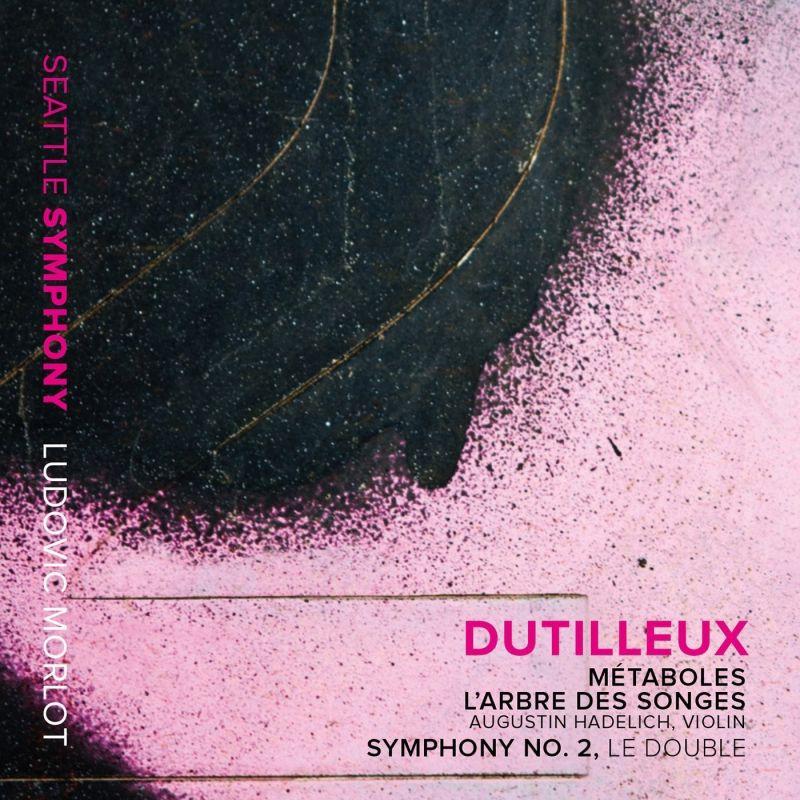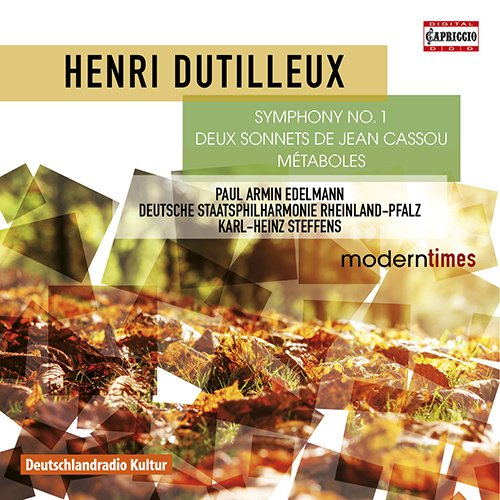DUTILLEUX Métaboles
View record and artist detailsRecord and Artist Details
Composer or Director: Henri Dutilleux
Genre:
Orchestral
Label: Seattle Symphony Media
Magazine Review Date: 10/2015
Media Format: CD or Download
Media Runtime: 72
Mastering:
DDD
Catalogue Number: SSM1007

Tracks:
| Composition | Artist Credit |
|---|---|
| Métaboles |
Henri Dutilleux, Composer
Henri Dutilleux, Composer Ludovic Morlot, Conductor Seattle Symphony Orchestra |
| Concerto for Violin and Orchestra, '(L')arbre des |
Henri Dutilleux, Composer
Augustin Hadelich, Violin Henri Dutilleux, Composer Ludovic Morlot, Conductor Seattle Symphony Orchestra |
| Symphony No. 2, 'Le double' |
Henri Dutilleux, Composer
Henri Dutilleux, Composer Ludovic Morlot, Conductor Seattle Symphony Orchestra |
Composer or Director: Henri Dutilleux
Genre:
Orchestral
Label: Cappricio
Magazine Review Date: 10/2015
Media Format: CD or Download
Media Runtime: 54
Mastering:
DDD
Catalogue Number: C5242

Tracks:
| Composition | Artist Credit |
|---|---|
| Symphony No. 1 |
Henri Dutilleux, Composer
Henri Dutilleux, Composer Karl-Heinz Steffens, Conductor Rheinland-Pfalz State Philharmonic Orchestra |
| (2) Sonnets de Jean Cassou |
Henri Dutilleux, Composer
Henri Dutilleux, Composer Karl-Heinz Steffens, Conductor Paul Armin Edelmann, Baritone Rheinland-Pfalz State Philharmonic Orchestra |
| Métaboles |
Henri Dutilleux, Composer
Henri Dutilleux, Composer Karl-Heinz Steffens, Conductor Rheinland-Pfalz State Philharmonic Orchestra |
Author: Philip Clark
With Morlot, veins of orchestral perspective are opened up. The introductory section, ‘Incantatoire’, gives notice of what to expect: intricately balanced woodwind projecting with a dynamic sense of shift between background and foreground, rapid clarinet figurations bubbling over the top like an unexpected swell of laughter. When the brass enter with sustained fanfares, the orchestral topography turns on its axis again as the woodwind are discreetly faded to the peripheries and, contrasting with Steffens’s one-dimensional mapping, Morlot evokes the thrill of ears discovering orchestral vistas and architecture in the moment.
But detail is never privileged over soul and the Seattle SO string sound is something special. Lead cellist Efe Baltacıgil transforms the brief cello solo at the beginning of Métaboles’s second section into a set piece, his cello swanking from the heart of the orchestra with a sexily expressive, reedy tone that sounds like Duke Ellington’s alto saxophone man Johnny Hodges has stood up to take a solo. Dutilleux’s Symphony No 2, Le double (1959), can sound workmanlike, a demonstration of what happens when a smaller chamber group – oboe, clarinet, bassoon, trumpet, trombone, timpani, harpsichord, celesta, string quartet – is forced into an exchange with the main orchestra, but Morlot’s ear for architectural light and space reveals a dialogue of shadows and instrumental doppelgängers, the Baroque concerto grosso ideal now audibly reinvented in terms of timbre and harmonic colour, not line.
Dutilleux’s Violin Concerto L’arbre des songes (1985) is by far his most-recorded orchestral piece, and this new one stands up very well, Augustin Hadelich finding more intimacy inside the unfolding patterns than Renaud Capuçon and Myung-Whun Chung and making Isaac Stern’s premiere recording sound expressively approximate (Sony, 2/85 – nla). Steffens offers an exquisite early piece, Deux Sonnets de Jean Cassou, and a solid performance of his Symphony No 1 – one outplayed by the supple account released last year on the first volume of Morlot’s Dutilleux series.
Discover the world's largest classical music catalogue with Presto Music.

Gramophone Digital Club
- Digital Edition
- Digital Archive
- Reviews Database
- Full website access
From £8.75 / month
Subscribe
Gramophone Full Club
- Print Edition
- Digital Edition
- Digital Archive
- Reviews Database
- Full website access
From £11.00 / month
Subscribe
If you are a library, university or other organisation that would be interested in an institutional subscription to Gramophone please click here for further information.




